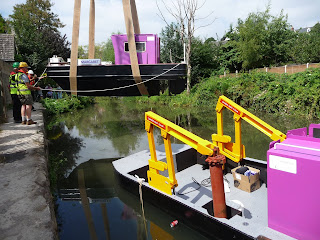Summit Working Parties
by: Karen Shaw
Hi Everyone
I expect some of you wondered if I came back from travelling Aus and NZ - I did - but had to get straight into A Level and GCSE marking for an average of 10 hours a day and have only just finished the whole lot.
So I write to advise you that the next Summit Section work party is from 10.00 am to 3/4
pm on Sunday 19 August.
There will be some strimming to do as well as manual bank and bed clearing work with hand tools, path boarding and sorting out what we want to do with the container as the pub would like us to improve its appearance.
New members are also
welcome to come along for all or part of the day. I usually provide tea /
coffee and biscuits / cake but please feel free to bring along your own
hot or cold drinks, and a packed lunch or have lunch in the pub. Please do bring lots of water if the weather continues to be as hot as it has been.
As usual, please wear sturdy (preferably steel toe capped) footwear or
wellington boots and stout clothes. Long sleeves and trousers are recommended
to avoid nettle stings and insect bites. Gloves and all other PPE are provided
along with all necessary tools.
The site is reached by a well sign-posted but rather pot holed track to
the Tunnel House Inn on the right, as you come down Tarlton Road out of Coates
and after a tight bend under a railway bridge. Postcode is GL7 6PW. On arrival
at the pub car park, please park up or down on the right.
Dates for work parties to the end of the year will be:
Sunday 16 September 2018
Sunday 14 October 2018
Sunday 18 November 2018
Sunday 9 December 2018 with lunch at the Tunnel House Inn after.
Any questions please contact me: Karen Shaw. Details on Connect.





































